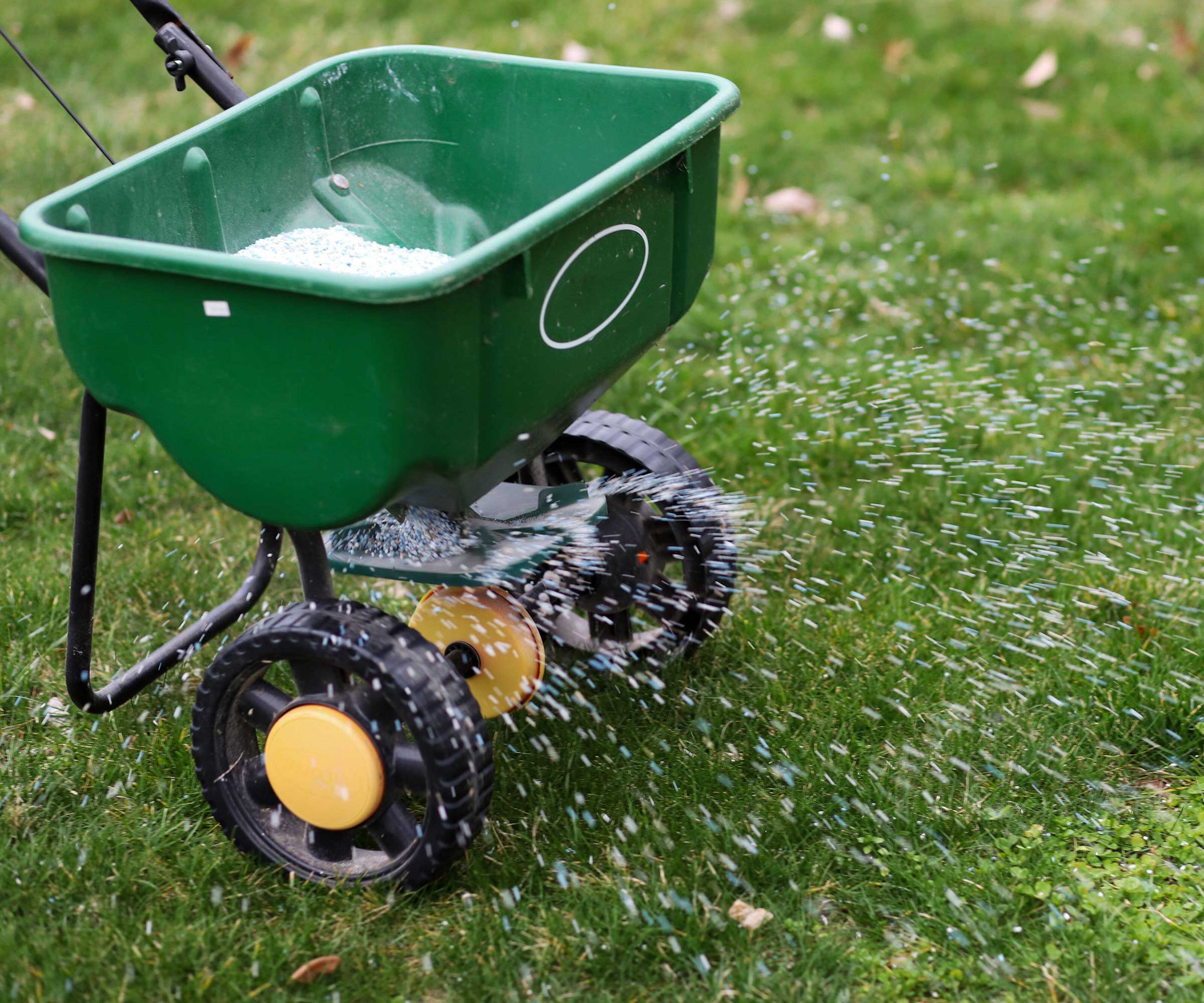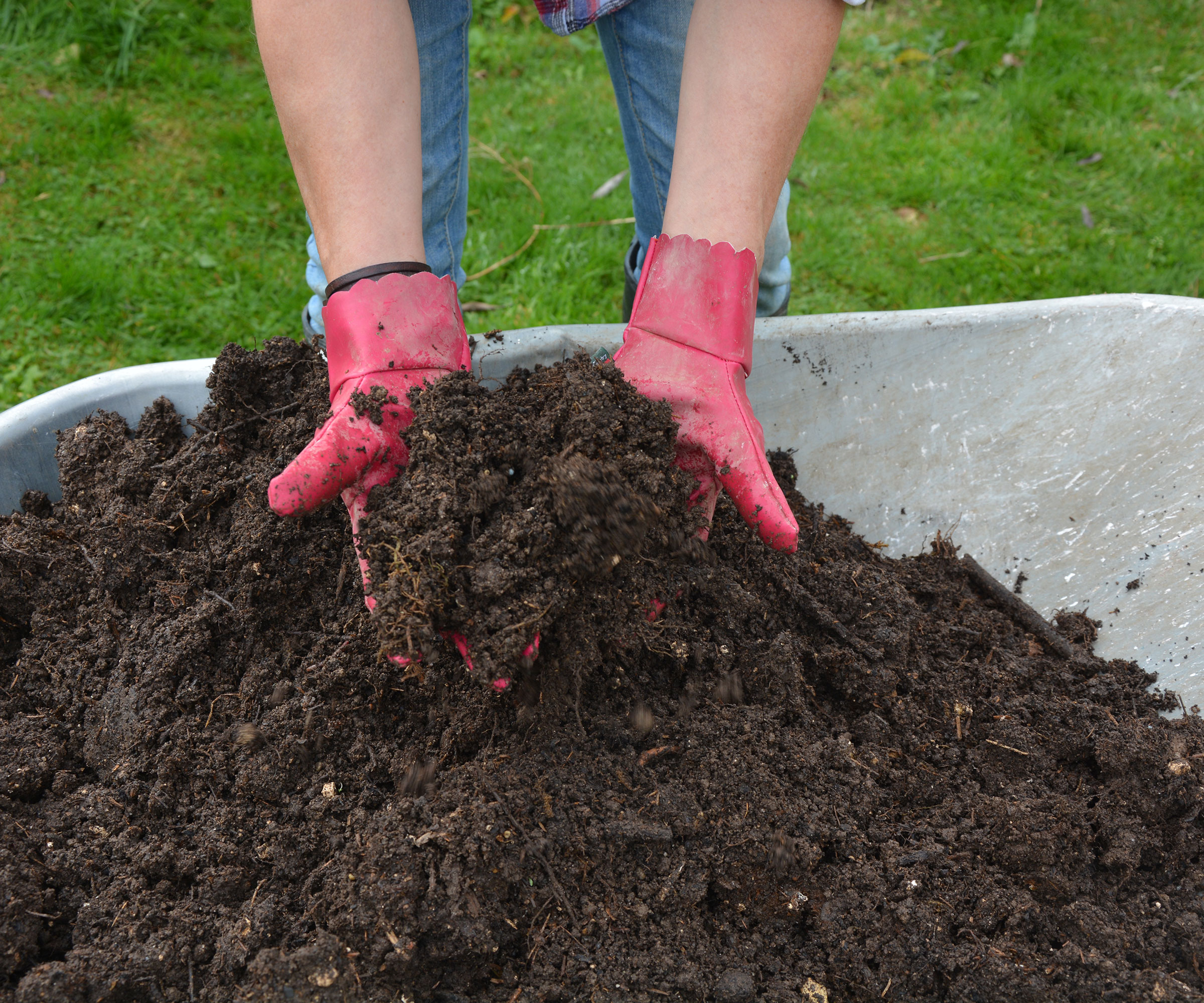
Fertilizing a lawn plays an important part in any maintenance regime. The first feed a lawn gets each year takes place in spring and, when done properly, gives the grass a great start to the new growing season.
Applying fertilizer as the ground warms up in spring and the grass starts growing is the ideal first step to spring lawn care and achieving a beautiful, thick green lawn come summer. There will be gardeners who have tried and trusted lawn feed products, but the range of options may leave other people’s heads spinning.
That's why we spoke to lawn care experts to find out more about how to fertilize a lawn at this time of year. After some analysis of the types of feeds available, they revealed to us the best fertilizer for grass in spring. Here's what you need to know.
Should I fertilize my lawn in the spring?

The short answer is, yes. Fertilizing a lawn is an important part of spring lawn maintenance as it provides all the essential plant nutrients required for your grass to be healthy, green, and able to stand up to all the rigours it will face throughout the season.
A lawn will come out of its winter dormancy needing a boost of nutrients to promote healthy growth and outperform weeds. Getting the timing right is important - you want to fertilize a lawn in spring just as it starts actively growing again, so make sure to add this task to your spring gardening checklist.
Doing a soil test is beneficial as it can help reveal if the lawn is short of any nutrients that need addressing through the use of fertilizers. This soil test kit from Amazon is a good choice.
How to pick the best fertilizer for grass in spring

Lawns require a specific set of nutrients in spring to grow strongly and it will be beneficial to ensure you understand plant fertilizer numbers. This knowledge will help you analyze the range of products on sale and ensure you choose the right product, while avoiding a potential lawn care mistake of picking a feed that could be detrimental to your lawn in the long run.
The packaging will refer to the make-up of nitrogen, phosphorus, and potassium as a ratio of three numbers, eg. 10-10-10 or 20-20-20, and the right choice of fertilizer can affect how your lawn will grow after it is applied.
You will also see different types of fertilizers on the shelves, or the pages of online retailers. There will be organic and synthetic fertilizers, granular or liquid feeds, and slow-release or fast-acting feeds.
To fertilize a lawn in spring, you ideally want to use a slow-release granular fertilizer that will provide nutrients to the grass over several months. There are also organic options that can be applied in spring to feed the grass over a long period. A fast-release liquid fertilizer is best applied regularly to the lawn during the summer months to give it a quick burst of nutrients.
Only apply fertilizer at the recommended rates, which you will find on the packaging. You can over-fertilize a lawn and leave burnt yellow or brown patches on the grass. An over-fertilized lawn will also be more vulnerable to pests and diseases.
Best synthetic fertilizers

In spring, lawns will want a lot of nitrogen. It promotes the healthy development of leaves and will help to give the lawn that thick and green look you aspire to have. That means the first number on the packaging will be higher, however, phosphorus and potassium are also important as they help develop strong roots.
Steve Peeler, internal agronomist of Simple Lawn Solutions, says that high-nitrogen fertilizers will ‘give a quick response’ but phosphorus and potassium are also needed for a healthy lawn.
‘The nutrients must be balanced in the soil so the grass can grow steadily and not become succulent and weak,’ he says. ‘Be careful when applying too much nitrogen to achieve a greener lawn. Excess nitrogen in the soil comes with many issues in the long run.’
Potential issues of feeding too much nitrogen include grass growing lots of foliage and little roots, which can leave a lawn at an increased risk of drought.
The best fertilizer for grass in spring is one that is high in nitrogen but also contains a balanced amount of potassium and phosphorus. Scott McLeod, the owner of McLeod Landscaping, advises that such a product is ‘a great option in spring as it gradually feeds the lawn, without risking burning the grass’.
‘A product I've had success with is Scotts Turf Builder Thick'R Lawn (at Amazon), which is specifically designed to thicken up lawns that are thinning,’ says Scott. ‘It combines seed, fertilizer, and a soil improver into one product, which I've seen produce visibly thicker and more robust lawns through my projects.’
You can get solutions referred to as ‘weed and feed’ products that both provide nutrients to the grass and kill a wide range of common lawn weeds. Such products are an attractive solution for homeowners to spread in spring as they do two vital jobs. One example of such a product to use in spring is this UltraGreen lawn weed and feed fertilizer, available at Walmart. It is best to use such products in spring, rather than using weed and feed in summer.
Granular fertilizers will require a spreader to apply them, like this mini broadcast spreader available at Amazon. Using your hands risks not evenly spreading the fertilizer and you will risk fertilizer burn if there are heaps of feed on the grass. A properly calibrated spreader will guarantee an even distribution of the fertilizer.
Watering after applying the fertilizer is also essential - if there is no rain forecast you may have to get out the hose and water by hand. Scott McLeod advises: ‘Give your lawn a good watering to help dissolve the granules and encourage nutrient absorption by the roots. This practice also minimizes the risk of fertilizer burn on the grass blades.’
An expert-recommended multi-purpose product to use in spring that has grass seed to fill gaps, fertilizer for thicker, greener turf, and soil improver to enhance root development.
A slow release granular feed with an NPK ratio of 16-4-8 that is is safe for use on all turf types and provides grass with nutrition for up to 8 weeks.
A liquid feed for lawns in spring with an NPK of 16-4-8 that can provide nutrients to any grass type.
Best organic fertilizers

Rather than a commercial fertilizer with high levels of nitrogen, you can also add nitrogen and other nutrients to the lawn using organic matter in spring.
Applying a thin layer of homemade organic compost, or shop-bought compost, to top-dress the lawn can help to improve soil health, structure, and fertility. It is advisable to aerate the lawn before fertilizing with organic matter and then brushing, or raking, the compost over the surface. You can use this aerator tool from Amazon.
Ryan Farley, CEO of LawnStarter, highlights how a combination of organic and commercial fertilizers can be used to get a healthy lawn overall. He says: ‘In my experience, the best way to feed your grass in spring is with a few separate applications beginning early in the growing season.’
An application of compost to feed the soil can be implemented as part of a lawn care routine, with aerating and scarifying a lawn in spring, and that can then be followed by a dose of slow-release fertilizer to provide nutrients to the grass as it starts actively growing.
FAQs
Can you put lawn feed on grass seed?
You can use a starter fertilizer designed for use with seeding when sowing grass seed. Take care to ensure it is a feed that is intended to help with seeding, otherwise, it may inhibit the germination. An example of a product to use is this lawn starter fertilizer available at Walmart.
Can I feed my lawn with blood fish and bone?
Blood fish and bone is an organic product that is often applied to flower beds and borders to feed plants and shrubs. It can be spread thinly across a lawn in spring to feed nutrients to the grass. A similar product is bone meal, available at Burpee, that can be added to a lawn to aid the development of shoots and roots.
When you start mowing the lawn in spring, remember to cut at a higher mower height than you will do in the summer months. Mowing can start once the temperatures rise past 50˚F and the grass reaches at least three inches in height.







